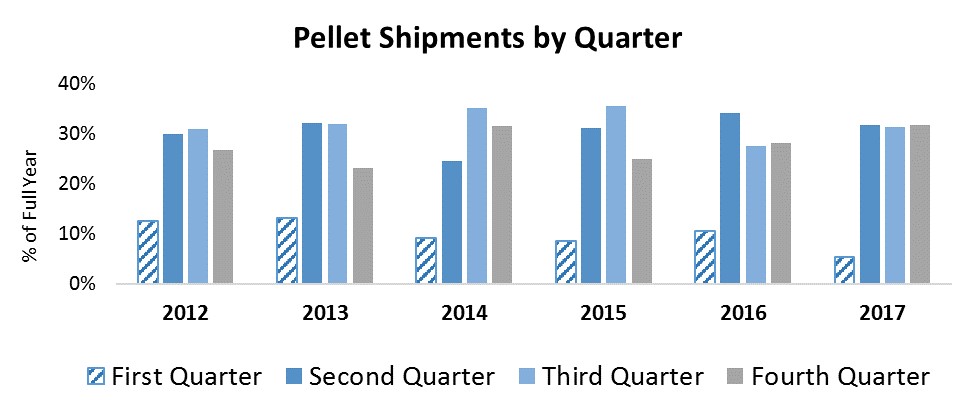Second Quarter 2018
Questions and Answers
August 1, 2018
Cautionary Note Regarding Forward-Looking Statements
This document contains information that may constitute “forward-looking statements” within the meaning of Section 27 of the Securities Act of 1933, as amended, and Section 21E of the Securities Exchange Act of 1934, as amended. We intend the forward-looking statements to be covered by the safe harbor provisions for forward-looking statements in those sections. Generally, we have identified such forward-looking statements by using the words “believe,” “expect,” “intend,” “estimate,” “anticipate,” “project,” “target,” “forecast,” “aim,” “should,” “will” and similar expressions or by using future dates in connection with any discussion of, among other things, operating performance, trends, events or developments that we expect or anticipate will occur in the future, statements relating to volume growth, share of sales and earnings per share growth, and statements expressing general views about future operating results. However, the absence of these words or similar expressions does not mean that a statement is not forward-looking. Forward-looking statements are not historical facts, but instead represent only the Company’s beliefs regarding future events, many of which, by their nature, are inherently uncertain and outside of the Company’s control. It is possible that the Company’s actual results and financial condition may differ, possibly materially, from the anticipated results and financial condition indicated in these forward-looking statements. Management believes that these forward-looking statements are reasonable as of the time made. However, caution should be taken not to place undue reliance on any such forward-looking statements because such statements speak only as of the date when made. Our Company undertakes no obligation to publicly update or revise any forward-looking statements, whether as a result of new information, future events or otherwise, except as required by law. In addition, forward-looking statements are subject to certain risks and uncertainties that could cause actual results to differ materially from our Company's historical experience and our present expectations or projections. These risks and uncertainties include, but are not limited to the risks and uncertainties described in “Item 1A. Risk Factors” in our Annual Report on Form 10-K for the year ended December 31, 2017, in our Quarterly Report on Form 10-Q for the quarter ended June 30, 2018, and those described from time to time in our future reports filed with the Securities and Exchange Commission. References to "we," "us," "our," the "Company," and "U. S. Steel," refer to United States Steel Corporation and its consolidated subsidiaries.
| |
1. | What is the status of the Asset Revitalization program and implementation of Reliability Centered Maintenance? |
We continue to make good progress on our asset revitalization program and remain focused on achieving both the EBITDA and capital spend targets as well as the quality and reliability improvements we committed to for 2018. Our goal is to deliver consistent, reliable earnings longer term with our focus on delivering sustainable operational improvements through 2020. We are making investments across our Asset Revitalization portfolio and benefits are materializing on these assets. Later this month we will begin a 52 day blast furnace outage at Great Lakes Works and have additional Asset Revitalization investments scheduled at the facility to coincide with the blast furnace downtime.
Reliability centered maintenance (RCM) is a critical part of our Asset Revitalization investments. The main focus of our deployment and acceleration of RCM on our priority assets is on two efforts: Building organization capacity and capability and implementing reliability practices and performance management. We are making significant progress at Gary, Mon Valley, and Great Lakes implementing reliability excellence following a standardized approach. We are focused on enhancements in our processes and building capability in our people related to RCM as we pursue our goal of improved asset reliability.
| |
2. | What is the status of the Section 232 investigation on steel imports? |
As of June 2018, U.S. imports of steel products covered by the Section 232 action from all countries except Argentina, Australia, Brazil, and Korea are subject to 25 percent tariffs. U.S. imports of covered steel products from Argentina, Brazil, and Korea are subject to restrictive quotas agreed to by those countries in lieu of the Section 232 tariffs, retroactive to January 1, 2018.
The U.S. Department of Commerce is managing a process in which U.S. companies may request and/or oppose temporary product exclusions from the 25 percent tariff. Companies have 30 days from the publication of an exclusion request to submit opposition comments, and each request should be adjudicated in roughly 90 days. U. S. Steel is actively opposing exclusion requests for products it produces. We continue to strongly support and defend the Section 232 action through all available tools.
| |
3. | Why is your reporting of postretirement benefit (expense) income changing in 2018, and how will the change impact your financial results? |
Effective January 1, 2018, U.S. Generally Accepted Accounting Principles (U.S. GAAP) has changed how an employer who offers defined benefit and postretirement benefit plans reports the service cost component of the net periodic benefit cost and the other components of net periodic benefit cost (ASU 2017-07). Service cost is reported in the same line item or items as other compensation cost arising from services rendered by employees during the period, primarily cost of sales. The other components of net periodic benefit costs are presented on a retrospective basis in the income statement separately from the service cost component and are now reported in net interest and other financial costs.
The adoption of this new accounting standard did not have an impact on our net earnings (loss), but it did result in a reclassification from a line on the income statement within earnings (loss) before interest and income taxes to a line on the income statement below earnings (loss) before interest and income taxes.
The table below shows the pro-forma impact of reporting under ASU 2017-07 on our 2016 and 2017 results.
| |
4. | How does the seasonality of iron ore shipments impact your financial results? |
Our mining operations are unable to ship pellets to our blast furnaces in the U.S. and to our third-party customers for much of 1Q because the Soo Locks, which connect Lake Superior with the lower Great Lakes, are typically closed from mid-January to late March. Our mining operations still produce pellets in those months, but at a lower volume. This scenario negatively impacts our financial results due to the operating inefficiencies that result from running at lower production volumes with increased spending due to planned maintenance resulting in a higher cost per ton.
The graphic below illustrates the seasonality of pellet shipments.



